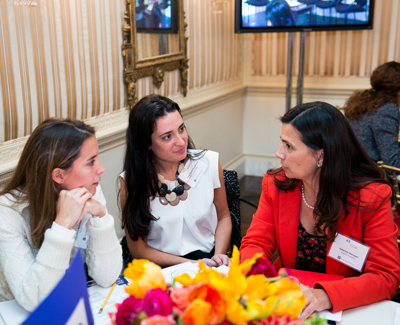Get the Numbers: Women in Government in the Americas
One third of the world’s female presidents govern in Latin America, while the Western Hemisphere boasts the highest regional average of women legislators.
Globally, the Western Hemisphere is leading the way toward gender equity in government. Between Argentina’s President Cristina Fernández de Kirchner, Brazil’s President Dilma Rousseff, and Chile’s President Michelle Bachelet, Latin America currently accounts for a third of the world’s female presidents. Add on Prime Ministers Portia Simpson-Miller of Jamaica and Kamla Persad Bissessar of Trinidad and Tobago, and the Latin American and Caribbean countries are also home to a third of female heads of state worldwide. Moreover, women make up 25.7 percent of parliamentary seats in the Americas—the highest regional average in the world.
|
Learn about AS/COA's Women's Hemispheric Network and its annual conference on Oct. 3 |
However, the majority of countries in the hemisphere—including the United States and Brazil—still remain below the UN-recommended 50 percent minimum for female-held government leadership positions. Most even lag behind the UN’s 30 percent benchmark set for 1995. So far, Cuba and Nicaragua have come closest to gender parity. Women occupy 48.9 percent of parliamentary seats in Cuba, and 57.1 percent of ministerial positions in Nicaragua.
In order to improve women’s participation in government, more than 15 countries in the region have adopted legislation requiring a minimum number of female candidates during elections. Three of these quota laws are in effect for the first time in 2014. Colombia’s 2011 quota law kicked off during the March congressional elections, and the upcoming October general elections in Bolivia and Uruguay will also implement quotas for the first time.
AS/COA Online takes a look at data on women in government and how the Western Hemisphere compares with the rest of the world.








